 Physical Activities
Physical Activities
Movement activities to help get the wiggles out!
-

- Activity Title
- ?
Topic or Theme
Identifying letters in a child's name and listen to ABC (The Alphabet Song)

-
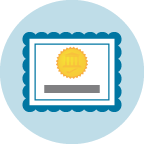
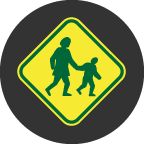
First Name
Brief description of activity or summary of tasks and/or materials used.
-

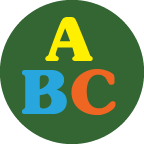
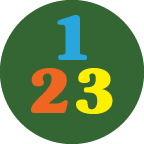
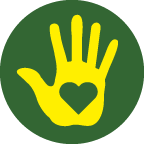

-
- Physical Activity.
- 21
Drawing (Small Motor)
Developing finger dexterity for handwriting and matching skills
-
Drawing (Small Motor)
Developing finger dexterity for handwriting and matching skills
-


-
- Physical Activity
- 20
Playground Visits (Gross Motor)
Participating in verbally directed obstacle course
-
Playground Visits (Gross Motor)
Participating in verbally directed obstacle course
-


-
- Physical Activity
- 21
Newspaper or Tissue Paper Fringe (Fine Motor)
Cutting fringe
-
Newspaper or Tissue Paper Fringe (Fine Motor)
Cutting fringe
-

-
- Physical Activity
- 21
Team Bean Bag Catch (Fine Motor)
Bean bag toss with partner
-
Team Bean Bag Catch (Fine Motor)
Bean bag toss with partner
-




-
- Physical Activity
- 21
Drawing (Fine Motor)
Drawing and describing a picture
-
Drawing (Fine Motor)
Drawing and describing a picture
-




-
- Physical Activity
- 20
Simon Says (Gross Motor)
Play game "Simon Says" to reinforce word stop
-
Simon Says (Gross Motor)
Play game "Simon Says" to reinforce word stop
-



-
- Physical Activities
- 21
Water Squeeze (Fine motor)
Outdoor water activity (Indoor if you are brave)
-
Water Squeeze (Fine motor)
Outdoor water activity (Indoor if you are brave)
-



-
- Physical Activity
- 20
Music Dancing (Gross Motor)
Dance time! Use songs “An Die Schonen, Blauen Donau - Walzer Op. 314” and “Love Grows One by One”
-
Music Dancing (Gross Motor)
Dance time! Use songs “An Die Schonen, Blauen Donau - Walzer Op. 314” and “Love Grows One by One”
-

-
- Physical Activities
- 20
Skating (Gross Motor)
Indoor "skating" with song "12 Variations on 'Ah, vous dirai-je, Maman", K.265 (Twinkle, Twinkle Little Star)
-
Skating (Gross Motor)
Indoor "skating" with song "12 Variations on 'Ah, vous dirai-je, Maman", K.265 (Twinkle, Twinkle Little Star)
-


-
- Physical Activity
- 20
Bean Bag Throwing (Gross Motor)
Bean bag target toss
-
Bean Bag Throwing (Gross Motor)
Bean bag target toss
-



-
- Physical Activities
- 21
Hammering (Fine Motor)
Practicing fine motor skills by hammering golf tees into styrofoam
-
Hammering (Fine Motor)
Practicing fine motor skills by hammering golf tees into styrofoam
-




-
- Physical Activity
- 21
Throwing and grasping objects (Fine motor)
Developing throwing skills while practicing shape recognition
-
Throwing and grasping objects (Fine motor)
Developing throwing skills while practicing shape recognition
-



-
- Physical Activities
- 21
Cutting Coupons (Fine Motor)
Cutting along dotted lines
-
Cutting Coupons (Fine Motor)
Cutting along dotted lines
-

-
- Physical Activities
- 20
Jump Rope Fun (Gross Motor)
-
Jump Rope Fun (Gross Motor)
-

-
- Physical Activity
- 21
Making a Megaphone (Fine motor)
Listen to song "Salve Regina Gregorian Chant" and create a "megaphone"
-
Making a Megaphone (Fine motor)
Listen to song "Salve Regina Gregorian Chant" and create a "megaphone"
-


Activity Skills Focus
1 Social / Emotional Skills
Skills that develop children’s ability to understand the emotions of others and help children recognize and use appropriate social behaviors (for example, making friends). In the Department of Education report “Guiding Principles A Resource Guide for Improving School Climate of January 2014 it states “strategies such as social-emotional learning programs that address non-cognitive skills, including problem-solving, responsibility and resiliency, can also help students develop the skills needed to fully engage and thrive in the learning environment.”
2 Language Skills
Skills that help children understand and communicate during early childhood. The alphabetic principle (knowing letter names and sound-letter matches) aids in language development and is enriched by verbal interactions with other children and adults (reading aloud and engaging in conversation).
View all Language Skills Activities
3 Math / Science Skills
Math and Science skills help children with problem-solving and reasoning. Exploring numbers, patterns, and measurements by using math manipulatives (beads, counters, pennies) are all ways children develop their math skills. Asking questions about their surroundings, learning a science vocabulary (predict, observe), and having hands-on experiences with their environment can help develop their science skills.
4 Motor Skills
Motor skills are actions that involve the movement of muscles in the body. They are divided into three groups:
1. gross motor skills, which are the larger movements of arms, legs, feet, or the entire body (crawling, running, and jumping)
2. fine motor skills, which are smaller actions, such as grasping an object between the thumb and a finger (pencils or scissors)
3. sensorimotor skills which use the five senses to guide physical motions as in eye-hand coordination.
View all Motor Skills Activities
5 Problem Solving Skills
Skills that help with the construction of thought processes, including memory, problem-solving, and decision-making.
